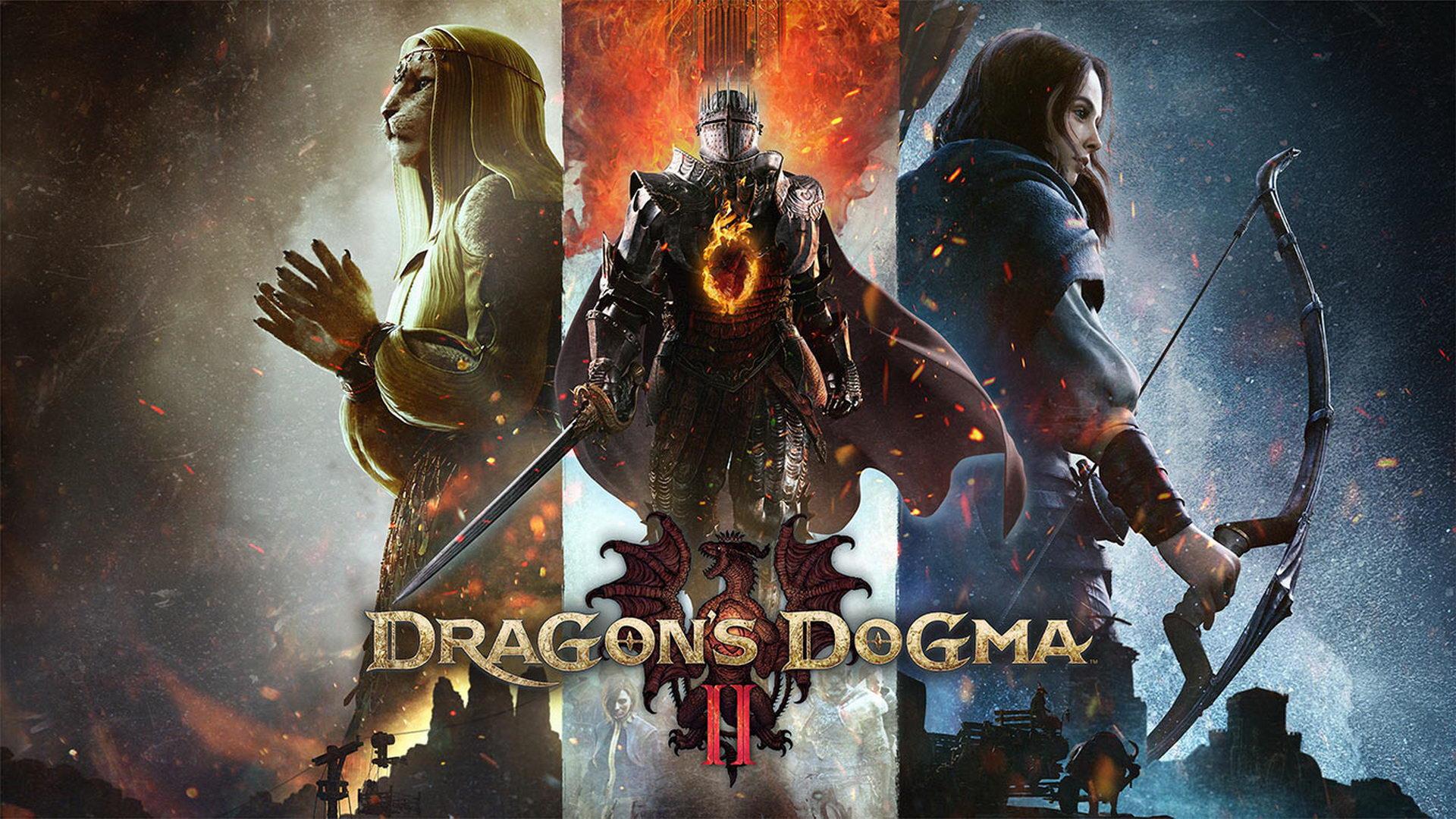Dragon’s Dogma II
Developer: Capcom
Publisher: Capcom
Platforms: PlayStation 5, PC, Xbox Series X/S (Reviewed)
Release Date: March 22, 2024
Price: $69.99 USD – Available Here $119.95 AUD – Available Here
Overview
After over a decade since it was last given any form of new content, outside of a doomed Japanese exclusive MMO, fans of Dragon’s Dogma were still hanging onto the hope that this unique take on an action RPG set in a low-fantasy world built around an allied Pawn system and focused around the Arisen and their Dragon enemy would still continue in some form despite being rough around the edges. Thankfully, their hopes were finally rewarded when it was announced that Capcom would indeed be bringing Dragon’s Dogma II out and with a variety of upgrades. Featuring refinements to classes as well as some new ones, an entirely new storyline, and far more polish than the original was ever given a chance to benefit from, has Dragon’s Dogma II managed to meet expectations? No. It in fact surpasses them in pretty much every way.
Story
Players take on the role of the Arisen, only there is a problem. Rather than kicking things off by fighting and failing against the dragon only to have your heart stolen, you are a slave in the mines with no memories of who you are, what you are,, or even what happened to you. Working alongside Pawns that the country players treat generally like trash, the player manages to escape using a unique opportunity and finds themselves landing in the far more benevolent land of Vernworth where the capital is preparing to crown the brand new Arisen as Sovran of the land. The problem here is, rather than it being the player, it is someone else entirely. So once the player arrives at their very first town and finds that not only has their very own Pawn appeared to swear allegiance to them, the Pawns of the world bend the knee and swear their loyalty to adventure by their side.
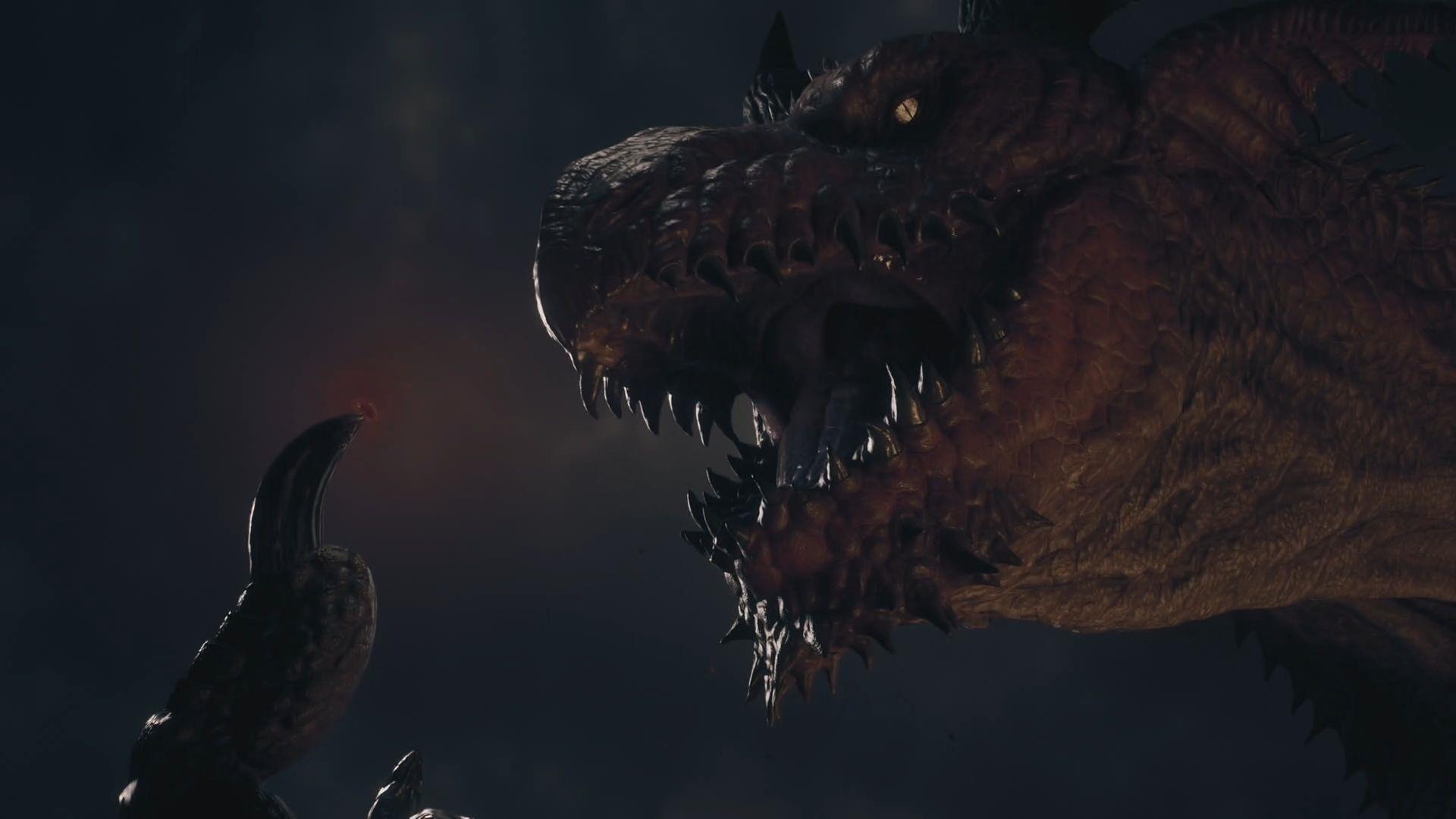
Thus kicks off a journey of intrigue and political backstabbing, mysteries upon who the false Arisen might be, why they are in such a position of power, what gives them the capabilities that should be exclusive to an Arisen, and so much more. Dragon’s Dogma II takes the previous game’s oft criticized storyline and manages to improve upon it immensely by taking and creating an interesting narrative that constantly has players stumbling upon something new and finding their own way to try and solve things. Sure, some quests are as simple as they say, and Pawns can once again provide guidance if they’ve done the quest before alongside another Arisen that has borrowed them online, but many have quite a few different outcomes.The narrative throughout Dragon’s Dogma II is highly entertaining and, while we cannot go into specifics about various elements, still holds true to the franchise’s staples even as players learn more and more about this unique take on the world and the many people that populate it, including the humans, Elves, and Beastren. This includes many of the fantastical elements that surrounded the first game as well, though many of these are more plainly laid out and better explained. There are also persistent NPCs, a world that changes the more players interact with it, and even some affection that is a bit easier to manage this time around compared to its predecessor.
Dragon’s Dogma II provides a rather unique take on side-content. As some may have heard, some side-quests are time limited and that is indeed the case, however rather than story limited (in my experience) they are actually day limited. Quests with a timer are indicated via an hourglass and players should prioritize them over others, as spending too long may result in the death of an individual, loss of information, or something else entirely. Now, as mentioned before, while nearly every story quest is generally clearly marked, the side-content in Dragon’s Dogma II is far more subtle at times and these quests often have a shockingly high amount of variety and outcomes to them. Since players are encouraged to travel on foot nearly everywhere with oxcarts only traveling during the day and between set locations and the removal of the “Eternal Ferrystone” from Dark Arisen, players must now make use of either the expensive consumable Ferrystones to travel between the limited Port Crystals (including the limited ones players can find and move around at will) should they need to fast travel.
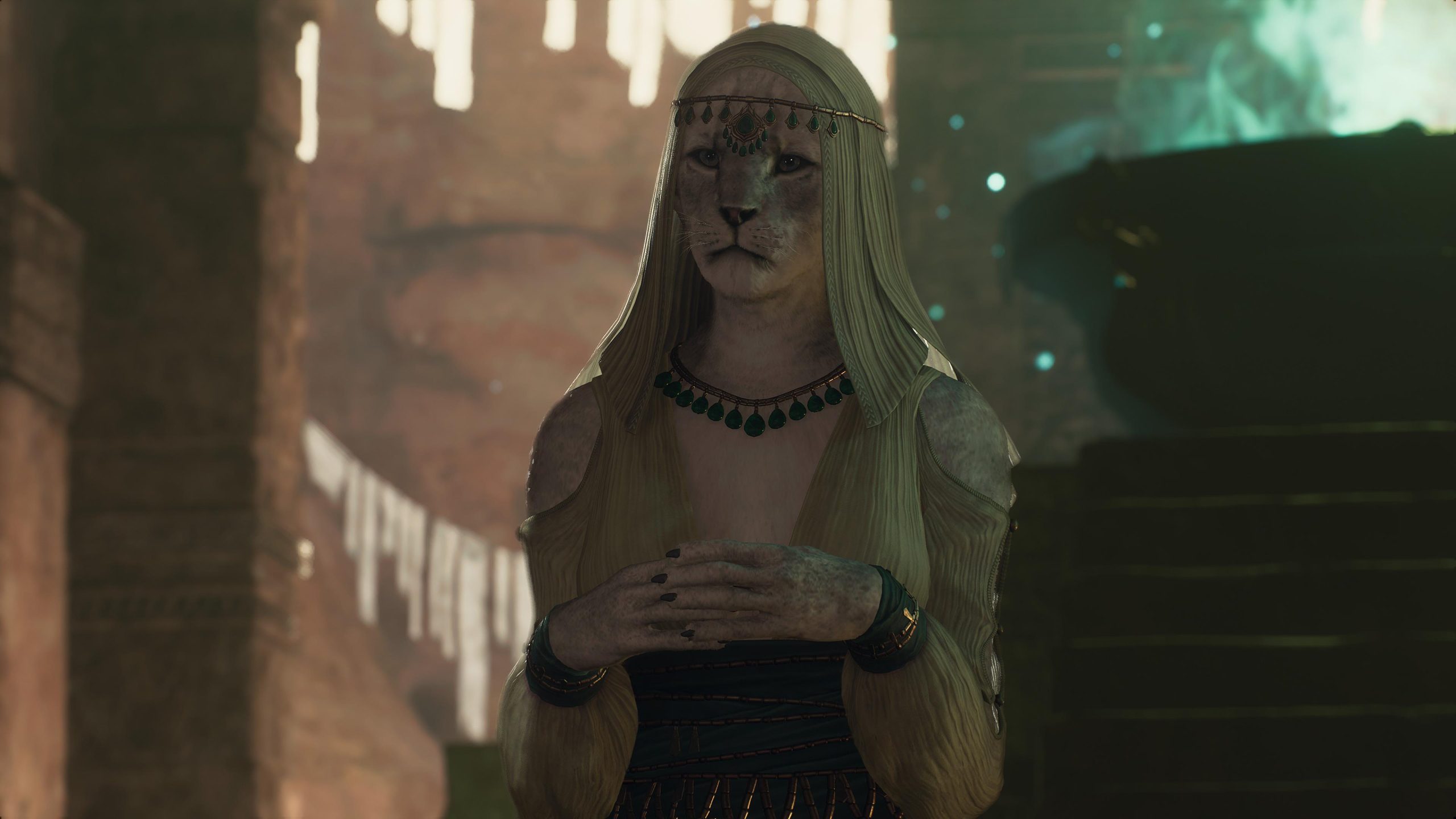
This means that it is entirely possible to wander aimlessly through the wilderness, uncovering caves filled with treasure and monsters, obtaining items that seemingly have unique purposes, and even some quests along the way that may be far more surprising than one may expect. This can include simply heading through locations players were clearly not meant to go yet. In fact, taking on one side-quest saw my party traveling through an entire location through a tunnel system that was clearly meant to be an alternate route through what would otherwise likely be a story event at a later time. This saw my group facing down challenging foes that we overcame through a bit of luck and trickery, eventually made it to our destination far earlier than expected and finished off the singular side-quest in that location. Though, now given our lack of a Port Crystal in the area and none in our inventory, meant a use of a Ferrystone and eventual trek back sometime in the future.
This organic style of adventuring is something rarely found in RPGs, even if the travel system remains a bit troublesome from time to time. Of course, the lack of such a system does allow for players to experience some truly ridiculous situations with monsters, allies, and more with the game doing its best to make every encounter feel as immersive as possible, including taking advantage of a dull-witted enemy to bridge a gap or target a hazard. It is also worth noting that, unlike most RPGs, the variety in the types of side-quests that players can undertake is shockingly high. Sure, some are still as simple as going somewhere to slay a monster or gathering items, but others can involve investigating NPCs, stalking characters as they go about their day, using appearances to locate a suspect, and more. This means that while the majority of quests can be a bit straightforward, a lot of them have unique permutations that players may not expect.
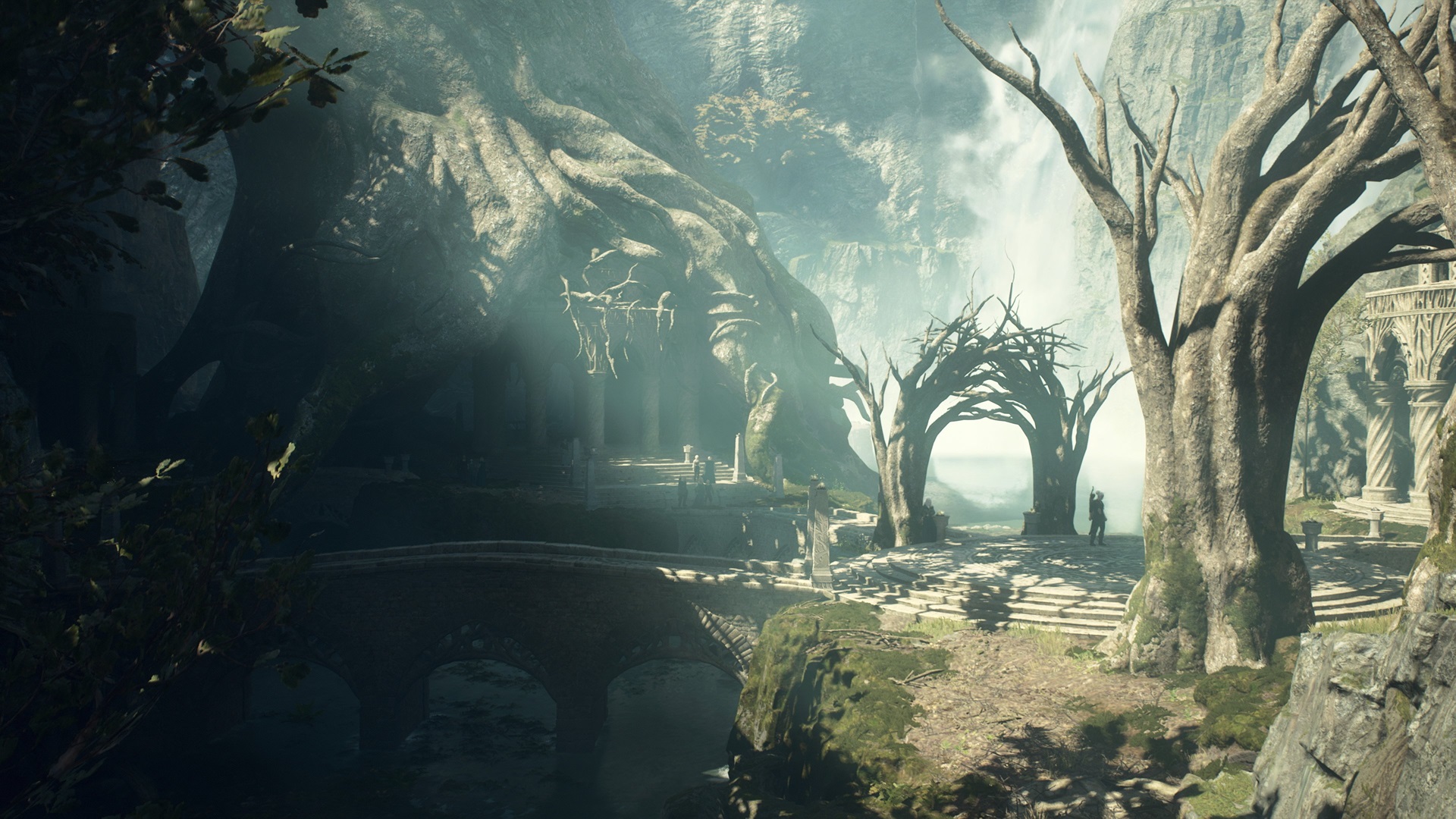
That being said, it is worth noting that a few of these quests are a bit more annoying than others, with two in particular standing out as annoying through either bugs or simply poor design. One required having an “extended” battle with a griffon only for our party to battle it out against the winged beast for some time, only for it to fly off halfway through the fight and the quest resulting in a half-finished result while another required a poison-obsessed NPC to be poisoned by a Chimera’s snake tail, only for the beast to literally never use its poison attack a single time throughout the entire encounter. Once again, resulting in a failure and ending the questline potentially early. It is worth noting that Dragon’s Dogma II does make use of only a single save file, though the option does exist to load from a save the last time players “Slept at an Inn” so players can use this as a last resort should something go terribly wrong and their last safe sleep wasn’t hours prior. Oh, and be wary of the Sphinx, the rumors were certainly true and her riddles are far more numerous than one may expect and definitely more than meets the eye.
Often a number of side-quests have different outcomes depending on what players do. Sure, there is a “forgery” option for some items but players may not find it until a certain point, forfeiting an item of which there is only a single one in the entire world and potentially changing the fate of one party entirely. Along these same lines, turning one item into one NPC instead of another or listening to one and taking sides may lead to horrible consequences down the line. This can potentially close off entire side-quests, lead to certain NPCs not even appearing in story cutscenes, and more. This level of variety is shockingly high and surprising given the design of Dragon’s Dogma II, giving some story developments an almost organic feel to them, and encouraging replayability or taking advantage of the game’s New Game+ system.
Gameplay
The core of Dragon’s Dogma II‘s gameplay still revolves around an action RPG style of sorts where players will make use of their vocation (class) skills to take on whatever enemy they encounter and it is just as thrilling as the original, though a number of refinements have been made. Players will start with a base list of vocations such as Archer, Fighter, Mage, and Thief with the Sorcerer and Warrior enhanced classes being limited behind a simple quest to unlock. Most of the classes will play in a similar enough manner as how one would expect, with mages being able to cast spells, heal, and provide elemental buffs to their allies, archers firing arrows at a distance and targeting flying foes, fighter’s drawing attention and serving as a tank of sorts, and the thief darting around the battlefield, clambering up larger foes to strike weak points, and making chaos on the field for the enemies. Every class has their own skills, core abilities, and augments that once unlocked remain unlocked even should players change Vocations. In fact, any augment can be applied to any class, allowing for plenty of customization options.
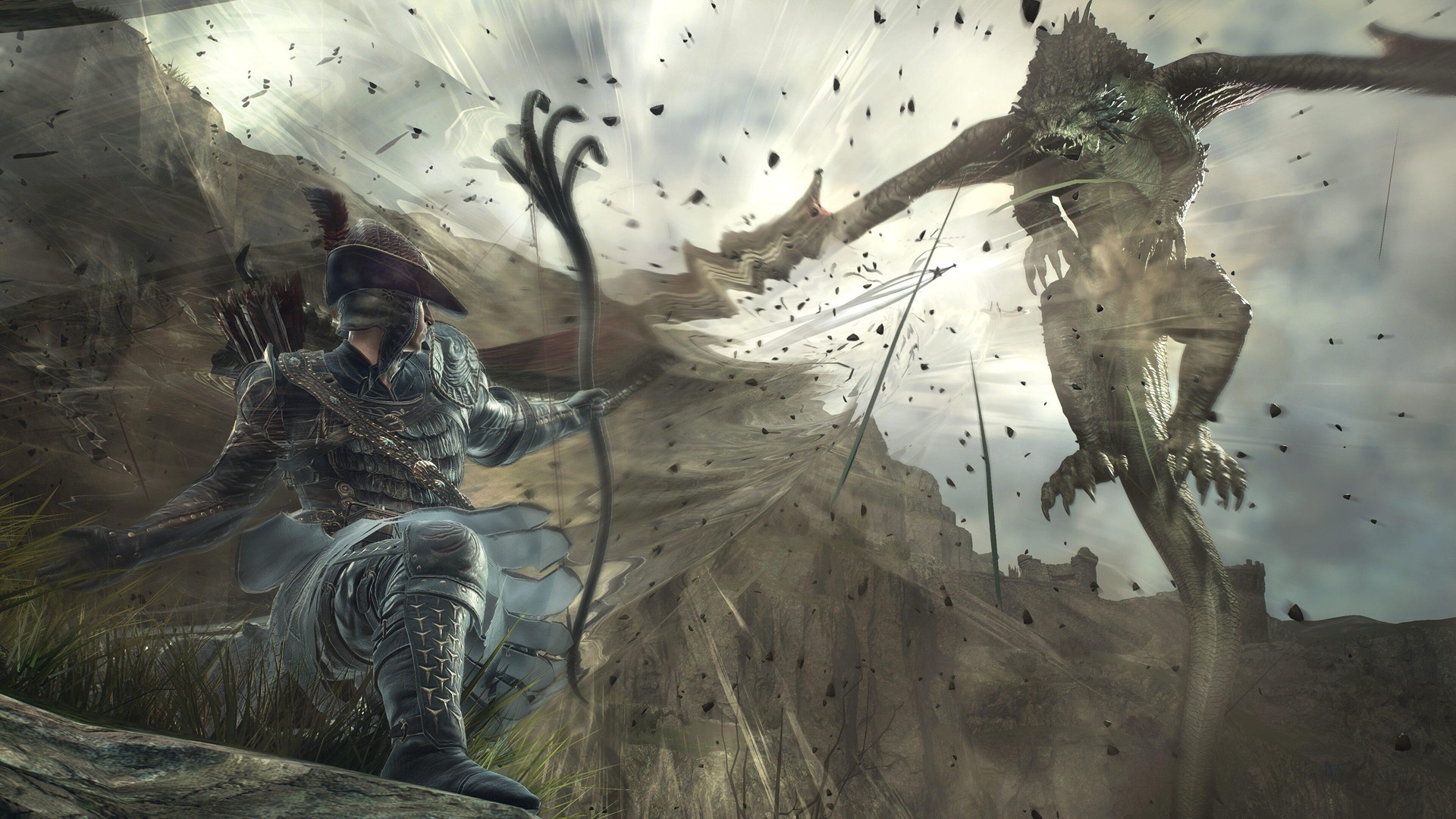
What has been changed a bit this time around is that there are now four Arisen exclusive vocations. This includes the Mystic Spearhand capable of wielding combining melee with a spear and magical spells that boost their allied pawns abilities and shield them from danger, a magick archer that is capable of long-range attacks that utilize elements to their advantage, the Trickster that is… an odd class that focuses on confusing enemies and tanking attacks using a smoke illusion, and finally the Wayfarer. The Wayfarer is an interesting class as it allows for the use of literally every ability the Arisen has unlocked through the game but also limits them to only three actual skills. The Wayfarer can equip any armor and weapon and swap between their weapons of choice but can only use a skill depending on the weapon type they have equipped, meaning a thief still can’t use spells but can use levitate to reach distant locations or hunt down an annoying Seeker Token.
The player’s Pawn can be assigned any of the base Vocations including the two more advanced ones and any of the skills they unlock and equip on their Pawn can then be carried over into other worlds, by players who hire them to help them on their journey. Similarly, players will be able to bring two other Pawns with them in their adventures to help best round-out their party and target a foe’s weaknesses. Pawns at the same level or lower can be hired for free while those who are stronger than the player will require Rift Crystals (RC) to hire. Players earn Rift Crystals from having their own Pawn used by other players or obtained from certain monsters and chests throughout the world. Depending on the Pawn hired or if the player’s own Pawn has been taken on a quest in another world, they can provide hints and even lead the player to a target location for quests and, in a new twist, there are personality types players can assign and even extra little skills players can give their Pawn, such as having them automatically craft items using gathered ingredients, heal the player using potions, or even speak the Elven language.
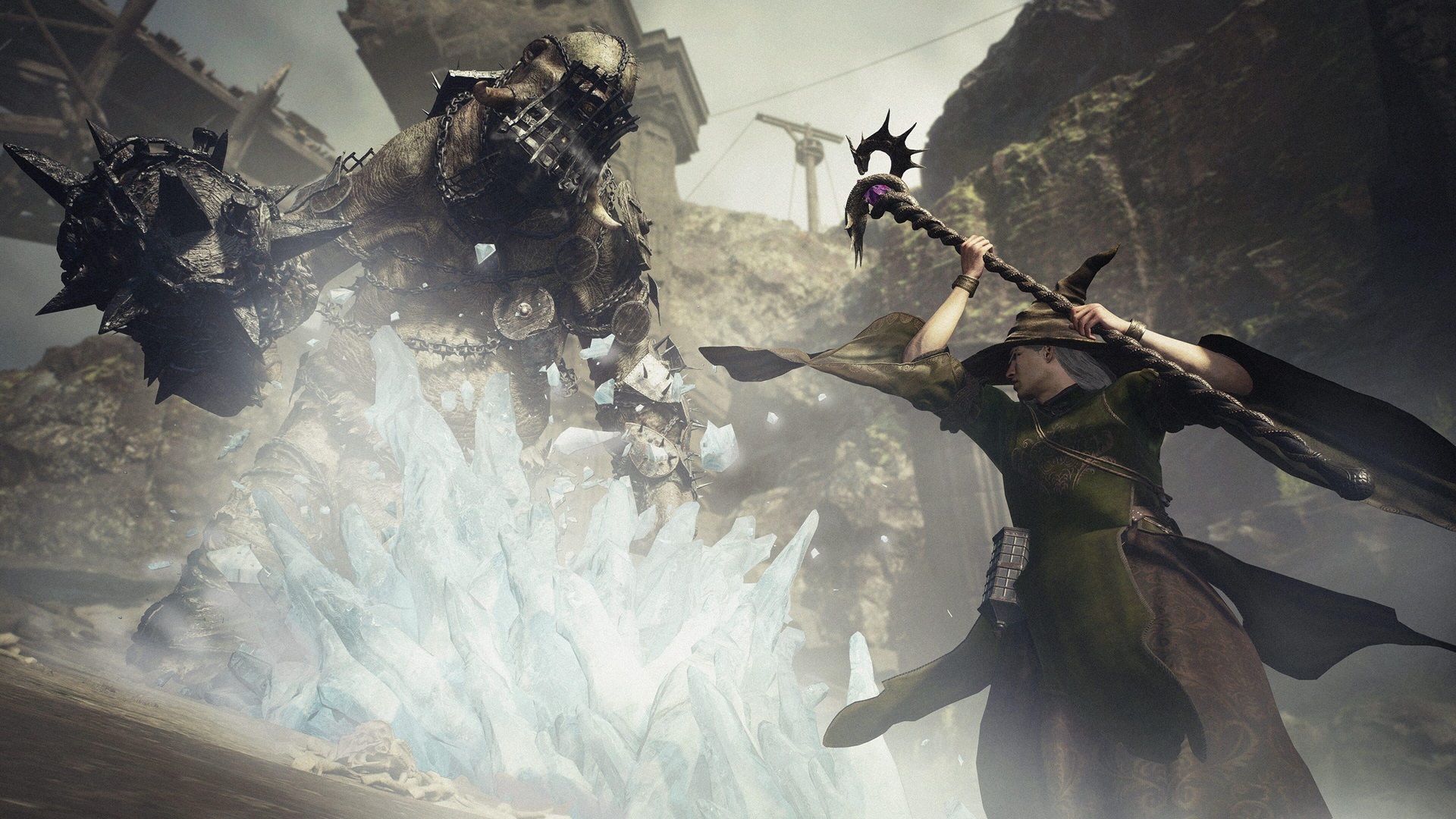
As mentioned before, exploring the world in Dragon’s Dogma II is a big part of the game. Fast travel options are kept at a minimum, even late game once players have obtained extra port crystals and start gathering plenty of Ferrystones, so exploring and finding little hidden caves filled with enemies and maybe treasure is part of the charm of the game. It is worth noting that the “loss” gauge does return as the party takes damage their total overall health will decrease until they get a proper rest but now players don’t need to return to town, instead they can choose to camp out if they come across a campsite. As long as players have a camping kit, they can rest at a camping site and even cook meat, featuring a hyper-realistic cinematic, for some temporary stat buffs to restore their loss gauge to full. Of course, players always run the potential of getting ambushed during camp and exploring during the night can be quite dangerous for a number of reasons. Not only is the lantern light rather dim, but new foes arise in the darkness including a few larger more powerful bosses as well.

Once in combat Dragon’s Dogma II continues to shine as players take advantage of their Vocations strengths to best take down their targets. While I swapped around heavily to get a feel for most classes, even maxing out the troublesome Trickster Vocation, most of my time was spent as a Thief. this meant that battles saw my fighter grappling foes into the ground, striking at their vitals once they were open and pilfering them of valuable items that don’t often drop otherwise. Larger foes, boss style encounters like the aforementioned Cyclops, Ogres, etc. can be climbed up and have their weak points targeted, and the thief is perfect for that, especially with Archer augments that allow for the easier climbing of foes. This led to my thief easily able to slip up a Griffin’s back and slash at its wings, setting them aflame to prevent it from running before setting a charge on its back and blasting away at it. Along these same lines, partnering with my Warrior Pawn my character could Esnare a Golem’s legs and hold it in place, giving my pawn ample opportunity to shatter it apart and allow the party to target its medallions. Crafting these types of strategies or simply overpowering foes is what makes Dragon’s Dogma II so exciting and every combat encounter can feel new and unique, especially with how things can escalate as we will mention a bit later and what makes it all the better is that nearly every one of these encounters with foes is entirely natural, with only a few scripted encounters set throughout the game. Rather instead players will find their own bosses to take down simply by exploring the world, and seeing what secrets could possibly be around the next corner.
Audio & Visuals
Dragon’s Dogma II still carries with it much of the aesthetic that fans will remember only given a significant upgrade over their original versions. For the most part, returning monsters will all appear similar in nature with various improvements, such as the Cyclops, Ogre, Chimera, and Griffin but the new large type monsters and even the smaller foes that players will need to contend with have undergone some new graphical upgrades as well. Alongside the designs of the monsters, the world itself is lavishly created with each of the game’s main locations having a unique aesthetic to them, be it the forest and hills that make up the Vernsworth region or the desert and mountainous rock-filled lands of the Beastran kingdom of Bakbatahl, taking clear inspiration from an middle-eastern/oriental design, to the forest filled lands of the North where the Elves hide away from the rest of the world. Each of these regions and their NPCs respectively dress and have their own unique patterns and make-up to them, giving the game a wonderful feeling during exploration, especially when you stumble upon a cave and decide to take the risk of seeing whether it leads to treasure, a new route, or a powerful foe.Even in combat, trees can be shattered and broken by large spells or monsters slamming around, smaller bridges can be torn asunder, breaking away paths for days until they are fixed. All of this combat feels like it has weight and impact, something few games can offer.

The game’s frame rate does hold up solidly throughout my time with Dragon’s Dogma II, including some rather outrageous looking events that took place. Part of the charm of Dragon’s Dogma has always been its potential for chaos and that is only enhanced in its sequel. Players and their pawns can unleash powerful abilities on their foes or have spells cast as they clamber around on top of a large enemy, and playing mostly as a thief to tear away at enemy weak points, that was my go to when not dabbling in the newer vocations mentioned earlier. This level of chaos can mean that players may venture along a pathway only to be beset by a group of hobgoblins, attracting the attention of a griffin flying overhead, whose shadow had already been visible as it was circling nearby oxen, that leads to a massive battle that players may find themselves unprepared for. Then, perhaps finally thinking they have won, a drake may land as well and call upon the Arisen to test their mettle against them. This chaotic event that unfolds can be rare but does happen. Heck, on multiple occasions simply venturing through one of the capital towns in Dragon’s Dogma II saw a Minotaur in one town and a Griffin in another tear through the gates, forcing my party into battle right in the center of the city streets as civilians scattered and the city guard and other nearby Pawns did their best to defeat the invading foe. These random events and the unpredictable way they can unfold make Dragon’s Dogma II truly special and gorgeous in a way other games can rarely offer.
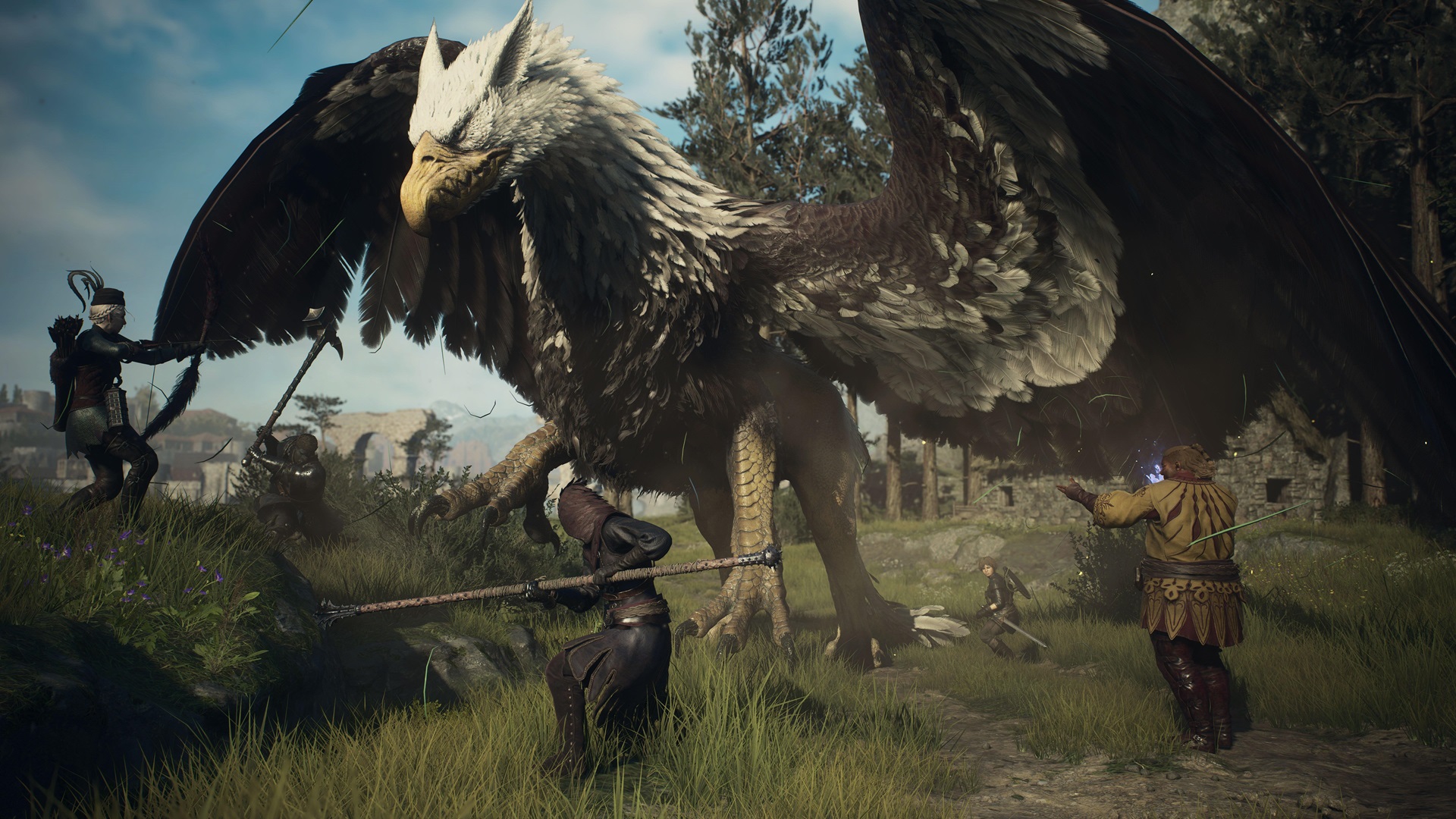
The voice work throughout Dragon’s Dogma II is handled decently though there is a bit of a lack of certain lines, though thankfully Pawns dialogue has seen a significant increase in variety, and that is with only the pre-release Pawns available through Capcom’s own creations and other reviewers. This means that there are far fewer repeated lines from Pawns during exploration, and the voice acting for primary NPCs is handled quite well with story scenes handled spectacularly. It is also worth noting that the game still makes use of some old-English style speak, meaning players will need aught learn some of the turns of phrase. The background music is handled nicely, with towns given their own tracks and exploration generally quiet outside of audio cues for enemies and during combat, including during highly dangerous combat, making it a solid offering for a soundtrack.
Overall
The depth to Dragon’s Dogma II is staggering combined with its variety and few could honestly have expected to see such an amazing feeling RPG like this, despite how promising the original release was. Not only does it take and improve upon literally every aspect of the original game, it manages to create an organic feeling storyline that players can pursue at their leisure while getting lost in an adventure all their own. Travel issues remain a bit of an issue and some bugs arise here and there, but with countless ways to play through the varied Vocation system, numerous quest outcomes, and a far more refined structure, Dragon’s Dogma II is a triumph in nearly every way. Let’s just hope it won’t take another decade to see more of this.
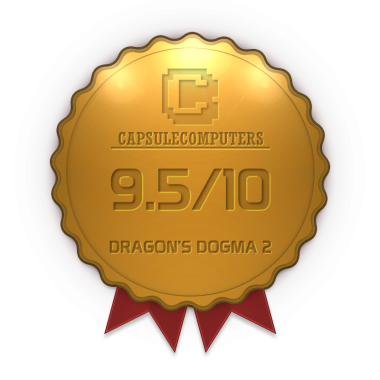
Capsule Computers review guidelines can be found here.


